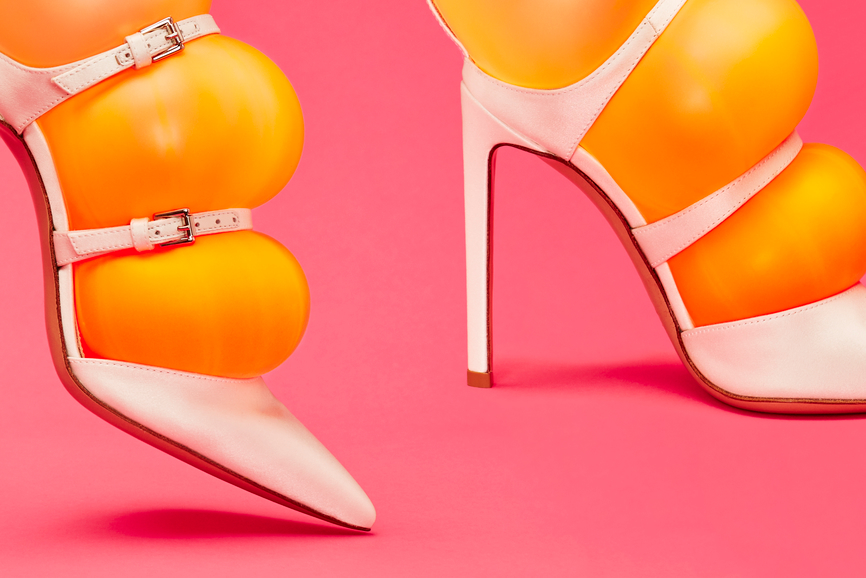Oedema and How It Can Affect Foot Function
When Shoes Say ‘No More’ it might not just be because your foot is changing shape, (as we age our feet tend to increase by a size or more from the loss of ligament tension and the more splayed the foot becomes meaning footwear needs to become more accommodative). However other changes in life can also lead to increased oedema with many conditions leading to this.
Oedema is the medical term for swelling brought on by fluid being trapped in your body’s tissues. Although oedema is more prevalent in the lower extremity it can also occur in our face, hands and abdomen. There are a variety of types of swelling and in the case of a ‘pitting oedema’ it can be graded in severity.
Oedema usually starts slowly, but the onset can be sudden. This illness is common because there are so many causes linked with this condition. The swelling can make it harder for you to carry out your usual daily living activities. Simple lifestyle modifications such as elevating the swollen part(s) of your body or just moving around more if you were sitting or standing for a long period of time can lessen the swelling, wearing compression socks, staying very well hydrated with nutritional modifications can all assist.
What are the symptoms of Oedema?
Symptoms depend on the underlying cause, but swelling, tightness and pain are common. A person with oedema in the foot may also notice walking and balance is compromised, the skin over the swollen foot can look shiny and stretched, a feeling of fullness or tightness in the swollen area can be reported. Weight gain or finding it very problematic to shift excess weight, an increase in coughing and/or trouble breathing and a sore feeling in the affected area(s) can also be reported. It is also harder for wounds to heal. This can become ongoing and quite problematic.
Symptoms can also depend on what type of edema a person has and which part of the body it affects.
Causes of Oedema
1) Foot, leg, and ankle swelling is common when we are overweight.
2) Having experienced a blood clot in our leg.
3) Advancement in our years.
4) And/or having experienced ongoing foot, ankle or leg infection / ulcer(s) can all pose risk factors.
5) Taking certain medications.
The veins in the legs can become compromised and do not effectively pump blood back to the heart , (also known as venous insufficiency).
Sometimes oedema is a symptom of an underlying health condition such as heart failure, kidney failure, liver failure, diabetes or gout (*not an exclusive list).
Lipoedema on the other hand is a long term (chronic) condition of fat and connective tissue which builds up in your legs predominantly but sometimes in the arms affecting both sides of the body equally. The skin becomes hypersensitive and your legs can bruise easily.
Common but oftentimes underdiagnosed meaning it can take years to obtain the correct diagnosis. Lymphoedema on the other hand occurs mainly on one side of the body and is a compromise of the lymphatics in our system not aberrant fat build up and is divided into primary and secondary lymphoedema.
If you develop increased swelling in your body, it is important to visit your healthcare provider. Your skin may stretch as a result of oedema, and if it is left untreated it can pose a major risk to your health. Depending on the cause, oedema can be a short or a long-term condition.
Treatment is available to help you manage any underlying conditions that might cause oedema or you can make simple lifestyle changes to reduce swelling and fluid buildup in your body.
What can we do?
In any condition where excess fluid or fat build up is present the more vulnerable you become to bacterial and fungal skin infections.
- Keeping skin clean and well moisturised **include moisturising the feet** to protect from damage and infection will help
- Avoid cutting nails too short and please do not cut cuticles
- Avoid walking around the house barefoot
- If you get a cut or a graze immediately use antiseptic cream and use a non-adherent dressing such as melolin and micropore dressing to cover.
- Wear sun protection at all times to avoid sunburn.
Are you suffering from this condition? At The Chelsea Clinic, we can help. One of our podiatrist can assist and then recommend what treatments are best to get you back on track. Podiatrist South Kensington
Schedule an appointment here or you may call us at +44 (0) 207 101 4000.
We hope you have a feetastic day!
-The Chelsea Clinic and Team




